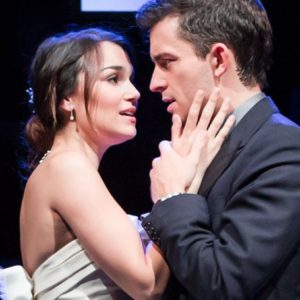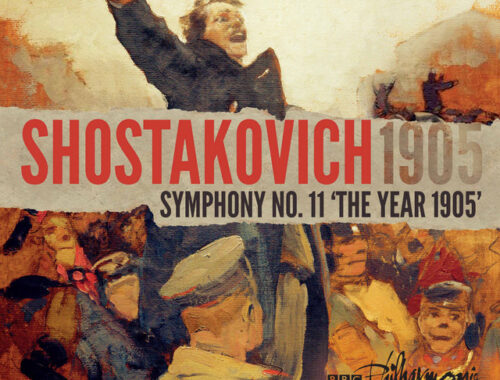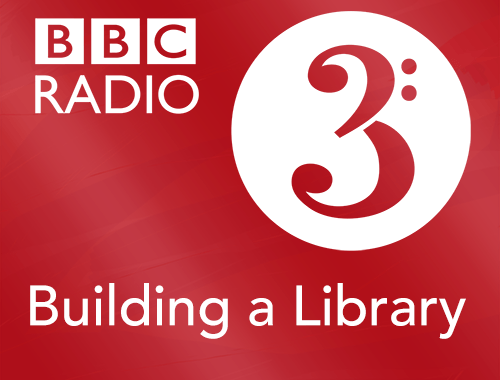The Last Five Years, St James Theatre
 From Monteverdi to Schubert to Bernstein and Lloyd Webber the dramatic song cycle has travelled far and wide over the centuries though not until Jason Robert Brown’s The Last Five Years in opposite directions. His two-handed tour-de-force shadows Cathy (Samantha Barks) and Jamie (Jonathan Bailey) as they find and lose each other at a time when both are seeking recognition in their creative lives. He is a writer, she an actress; his timeline moves forwards, hers backwards. They meet only once. But as one moves towards the light and the other towards darkness hope and despair somehow find harmony in disharmony. Songs can do that. And with songs this good, who needs dialogue?
From Monteverdi to Schubert to Bernstein and Lloyd Webber the dramatic song cycle has travelled far and wide over the centuries though not until Jason Robert Brown’s The Last Five Years in opposite directions. His two-handed tour-de-force shadows Cathy (Samantha Barks) and Jamie (Jonathan Bailey) as they find and lose each other at a time when both are seeking recognition in their creative lives. He is a writer, she an actress; his timeline moves forwards, hers backwards. They meet only once. But as one moves towards the light and the other towards darkness hope and despair somehow find harmony in disharmony. Songs can do that. And with songs this good, who needs dialogue?
You almost wonder where this show can possibly go when the opening number is so strong, so emotive, so damn heartbreaking. Cathy is “Still Hurting” from the break-up of her relationship with Jamie and Samantha Barks is already singing the crap out of her darkest hour when we’ve barely settled in our seats. One of the extraordinary skills that Jason Robert Brown (who is also the director of this revival) exercises so tellingly in his score is the innate kinship between numbers – the way they share DNA, the way they relate to and impact upon each other. It may only be subliminal for some but these songs are all of a piece and while Cathy is “Still Hurting” and Jamie “Moving Too Fast” in a blur of euphoric infatuation, a shared phrase of music can mean something entirely different in both contexts.
That second song is a blinder and as Jonathan Bailey – sensationally good as Jamie – breathlessly loses his reason you see how the songs in this score need “acting”, how the emotions they express, the joy and/or sadness they convey, has to be felt as well as sung. You might think that that is a given but I have seen this piece achieve a fraction of the impact it does here because the narrative “detail” and subsequently the feeling springing from it just wasn’t there. Sure the lyric to “Shiksa Goddess” is funny – hysterical even – but it is immeasurably funnier if the insanity of its imagery is despatched, as Bailey despatches it, like every single idea is his own and out of his mouth before he can edit it. His comic timing is superb and his physical “tells” make something truly memorable of “The Schmuel Song”, the Christmas Day number that manages to be as funny as it is touching.
Samantha Barks, too, rings true and has writ large the frustration of the actor’s lot (“Climbing Uphill”) and through her you feel the warmth of Jamie’s smile in “I’m a Part of That” because Brown has written a refrain so radiant that it almost doesn’t need words to convey the inner glow.
That inner glow also comes from the two cellos at the heart of the composer’s own orchestration deftly, eloquently, led from the piano by MD Torquil Munro. Two guitars etch in their own distinctive colours whilst Martin Lissola’s violin lends a touch of Klezmer here and there. Derek McLane’s design has each player perched on a brickwork backdrop redolent of a New York fire escape. Windows become video screens lending their own suggestive imagery to the narrative.
But the song’s the thing. And as those two final songs – movingly juxtaposed – find harmony in the disharmony of hope and despair we are reminded how easily those two emotional states can co-exist and how delicate a balance it is.
Floyd Collins, Wilton's Music Hall
You May Also Like

GRAMOPHONE: From Where I Sit – August 2020
16/09/2020
BBC RADIO 3 – CD REVIEW “BUILDING A LIBRARY” Saturday 8 March
14/01/2014